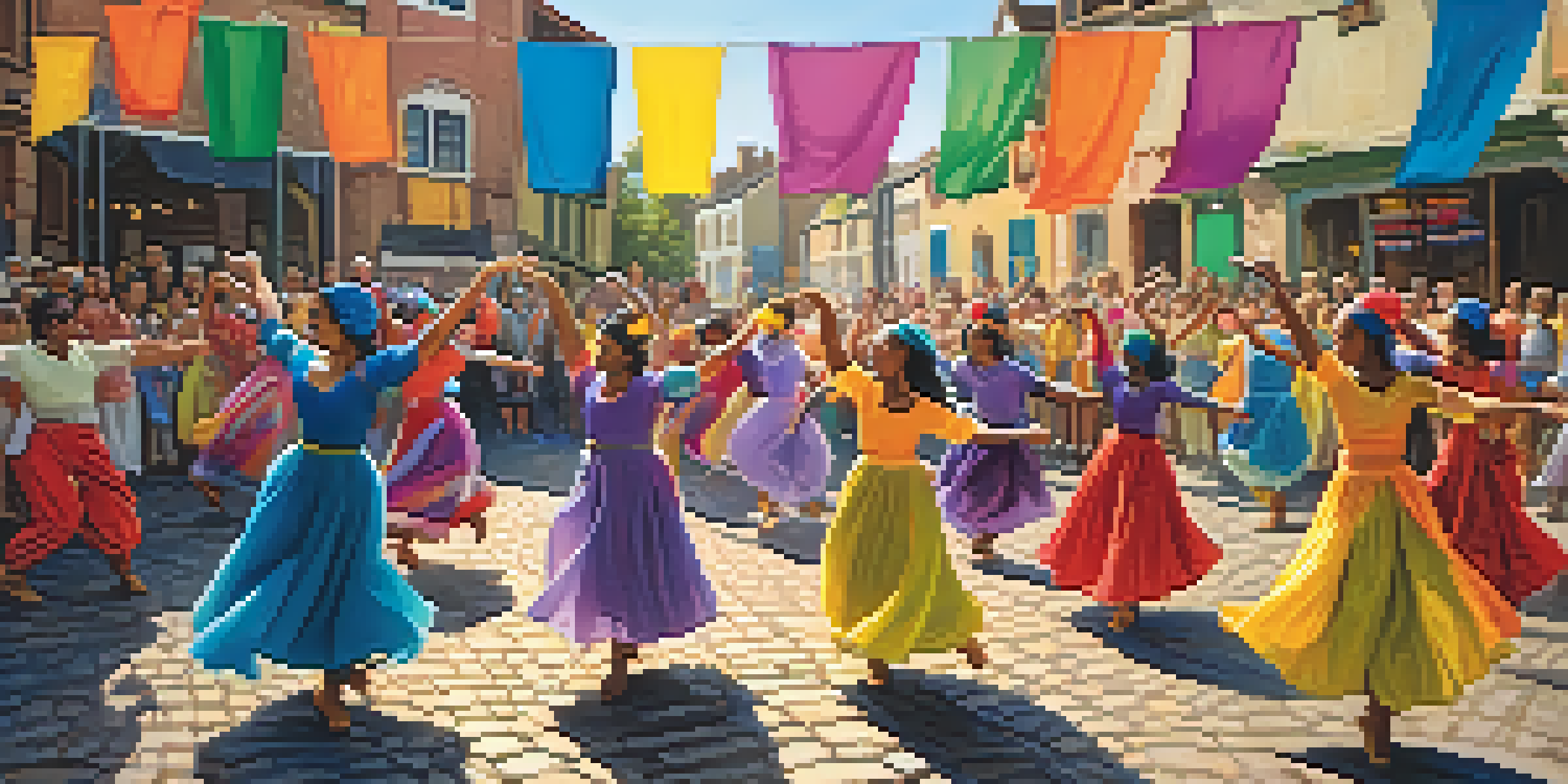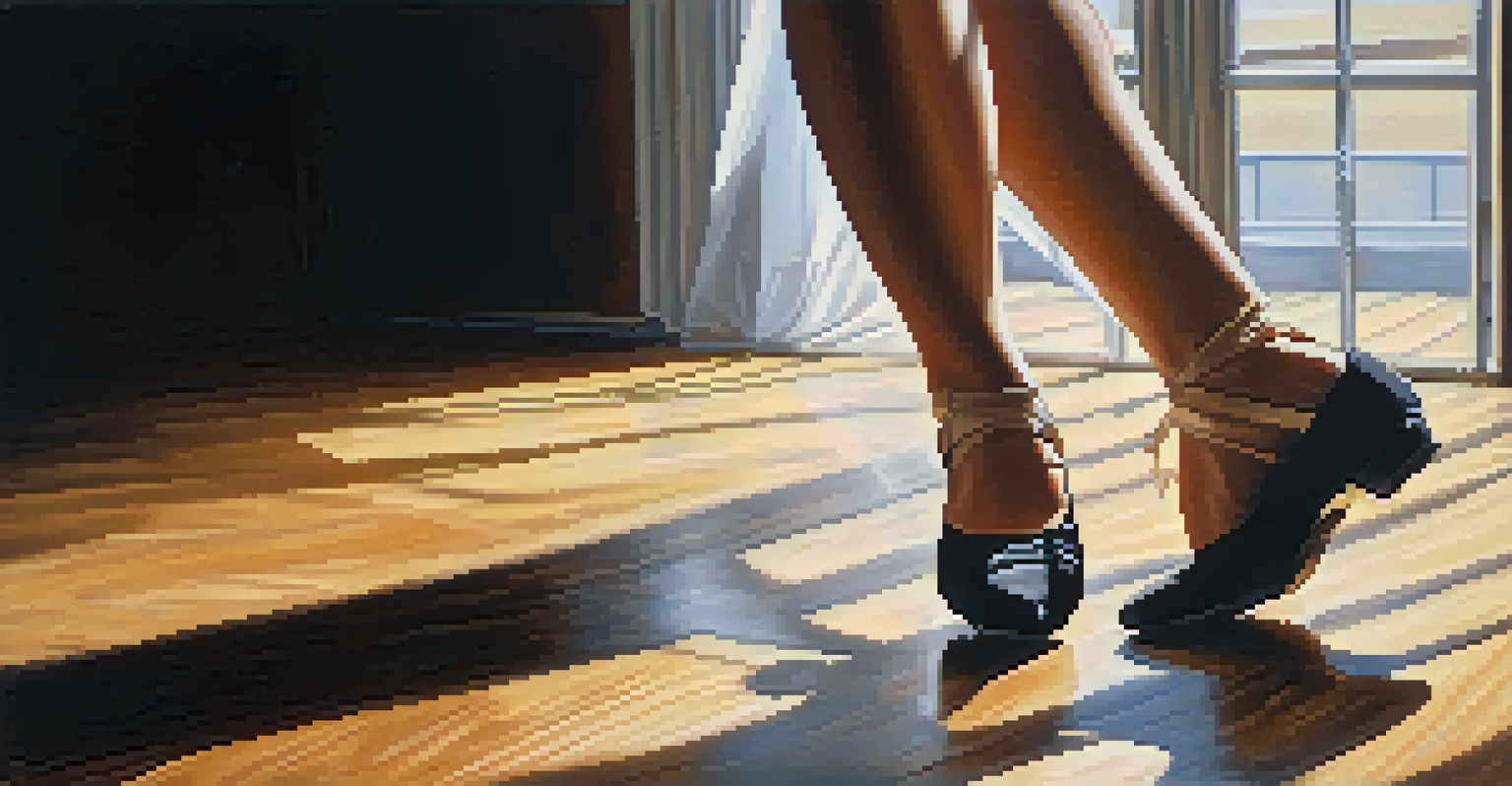The Impact of Social Media on Dance and Performance Art

Social Media: A New Stage for Dance and Performance Artists
Social media platforms have become vibrant stages where dancers and performance artists showcase their talents. With platforms like Instagram, TikTok, and YouTube, artists can reach global audiences instantly, breaking geographical barriers that once limited their visibility. This accessibility allows for a diverse range of performances that can be easily shared and liked, creating a sense of community among artists and fans alike.
Dance is the hidden language of the soul.
Imagine a dancer in a small town who can now gain followers from across the globe just by posting a video of their routine. This democratization of performance art means that talent is no longer confined to traditional venues. Instead, it thrives in the digital realm, giving rise to new styles and trends that reflect the cultural melting pot of online interactions.
Moreover, social media encourages collaboration among artists from different backgrounds, leading to innovative and fusion styles that may not have emerged in isolation. As artists share their unique perspectives, they inspire one another, creating a rich tapestry of creativity that embodies the very essence of dance and performance art.
The Rise of Viral Dance Challenges
Viral dance challenges have taken the world by storm, often starting on platforms like TikTok and spreading like wildfire. These challenges invite everyone, regardless of skill level, to participate, turning the act of dancing into a shared experience. Think of the 'Renegade' dance; it not only showcased an individual dancer's talent but also inspired millions to join in, creating a collective moment of joy and creativity.

The impact of these challenges goes beyond mere entertainment. They foster a sense of community as people of all ages and backgrounds come together to learn and perform the same routine. This communal aspect amplifies the reach of dance, transforming it from a solitary activity into a global movement that celebrates diversity and inclusion.
Social Media as a Performance Stage
Platforms like Instagram and TikTok allow dancers to showcase their talents globally, breaking traditional barriers and fostering community.
However, the phenomenon isn't without its challenges. As dances go viral, intellectual property issues can arise, leaving creators grappling with recognition and credit. This highlights the need for conversations about ownership in the digital age, ensuring that artists receive due acknowledgment for their contributions.
Building a Brand Through Social Media
For many dancers and performance artists, social media has become a vital tool for building their personal brand. By curating their online presence, artists can showcase their unique style, engage with followers, and attract potential sponsors or collaborators. This aspect of branding allows them to not only present their work but also to tell their story and connect on a deeper level with their audience.
The dance is a poem of which each movement is a word.
Consider the journey of a dancer who shares behind-the-scenes glimpses of their rehearsals, daily routines, and personal struggles. This transparency fosters authenticity, making followers feel like they are part of the artist's journey. It's this relatability that can turn casual viewers into dedicated fans, creating a loyal community around the artist's work.
Moreover, a strong online brand can lead to opportunities beyond social media, such as workshops, performances, and partnerships with brands. By leveraging their online presence, artists can create a sustainable career in the competitive world of dance and performance art.
The Influence of Audience Engagement on Performance Art
Social media has redefined the relationship between performers and their audiences. With instant feedback through comments, likes, and shares, artists can gauge audience preferences and trends in real-time. This interaction not only enhances the connection between the performer and the audience but also influences the direction of their future work.
Imagine a dancer who receives feedback on their latest performance video, prompting them to explore a new style or theme in their next piece. This dynamic exchange encourages artists to experiment and adapt, leading to more innovative and relevant performances. It’s a two-way street where audience engagement directly impacts the creative process.
Viral Dance Challenges Unite All
Dance challenges encourage participation from everyone, creating a shared experience that celebrates diversity and community.
Furthermore, performers can create interactive experiences, such as live Q&A sessions or virtual workshops, allowing fans to engage in a more meaningful way. This level of interaction blurs the lines between performer and audience, creating a collaborative atmosphere that enriches the overall experience of dance and performance art.
Challenges of Authenticity in the Digital Age
While social media offers incredible opportunities, it also presents challenges, particularly concerning authenticity. Many artists feel pressured to present a polished version of themselves, leading to a curated image that may not reflect their true selves. This pressure can create a disconnect between the artist and their audience, as followers may struggle to relate to an idealized persona.
The quest for likes and shares can sometimes overshadow the artistic process, leading some to prioritize trends over genuine expression. This phenomenon raises an important question: How can artists remain true to their craft while navigating the demands of social media? Finding that balance is crucial for maintaining artistic integrity.
Moreover, the constant comparison to other artists can be discouraging, especially for emerging talents. It’s essential for artists to remember that their unique voice is what sets them apart and to focus on their personal journey rather than simply chasing virality.
The Role of Social Media in Dance Education
Social media is also changing the landscape of dance education, providing unprecedented access to resources and learning opportunities. Tutorials, live-streamed classes, and dance challenges create a wealth of knowledge that aspiring dancers can tap into from the comfort of their homes. This accessibility democratizes dance education, allowing anyone with internet access to learn and grow.
Imagine a young dancer in a rural area who can now follow world-renowned instructors through online classes and tutorials. This exposure not only enhances their skills but also inspires them to pursue their passion more seriously. As a result, social media is bridging gaps in traditional education, making high-quality instruction available to a broader audience.
Authenticity vs. Social Media Pressure
Artists face the challenge of maintaining authenticity amid pressures to curate an idealized online persona for audience engagement.
Additionally, social media platforms facilitate peer learning, where dancers can share tips and techniques with one another. This collaborative learning environment fosters a sense of camaraderie among dancers, creating a supportive community that encourages growth and development.
Future Trends: The Evolving Relationship Between Dance and Social Media
As technology continues to evolve, so will the relationship between dance and social media. We are already witnessing the rise of augmented reality (AR) and virtual reality (VR) experiences that could redefine how performances are experienced by audiences. Imagine attending a dance performance from your living room, feeling as if you’re right there in the front row, thanks to VR technology.
Moreover, the integration of artificial intelligence (AI) in choreography and performance analysis could open new avenues for creativity. Dancers might use AI tools to analyze their movements and receive instant feedback, enhancing their training and performance quality. This marriage of technology and art could lead to innovative forms of expression that we have yet to imagine.

Ultimately, the future of dance and performance art lies in the ability to adapt and embrace these new tools while remaining true to the core values of creativity and expression. As artists continue to navigate this ever-changing landscape, their resilience and adaptability will shape the next chapter of dance in the digital age.